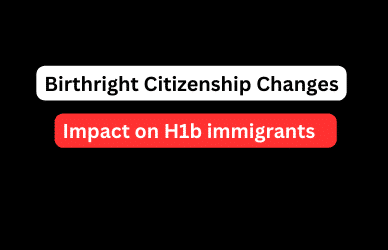Navigating work opportunities as an international student in the U.S. can be challenging, especially when it comes to choosing between OPT vs CTP.
If you are an F1 student, you have the option of training in the United States by engaging in practical training during your program or after it ends. Practical training can provide valuable work experience by sharpening and adding to the skills you are learning in school. There are two types of practical training available for F-1 students: curricular practical training (CPT) and optional practical training (OPT).
But they serve different purposes and come with distinct rules. Let’s break down the key differences and help you make an informed decision.
- There were 160,627 pre- and post-completion optional practical training (OPT) students with both an employment authorization document (EAD) and who reported working for an employer in calendar year 2023, compared to 117,301 in calendar year 2022 —a 36.9 percent increase.
- In 2023, California hosted 237,594 international students, the largest percentage of international students (15.8%) of any U.S. state.
- There were a total of 122,101 international students participating in science, technology, engineering, and mathematics (STEM) OPT in 2023. Most students participating in STEM OPT were from India (39.1%) or China (23.7%).
Data Source: DHS
What is OPT
Optional Practical Training (OPT) allows F-1 visa holders to work in the U.S. for up to 12 months in a role directly related to their major. It’s designed to help students gain real-world experience either before or after graduation.
– Duration: Up to 12 months, with an additional 24-month extension for STEM graduates who work for E-Verified employers.
– Eligibility: Students are eligible for OPT after completing one full academic year.
– Application Process: OPT is approved by the USCIS and can take anywhere from 90 to 120 days to process.
– Flexibility: You can work for any employer, and it’s not tied to a specific course or internship.
-Timing: OPT can be used before (pre-completion) or after graduation (post-completion).
What is CPT?
Curricular Practical Training (CPT)
allows students to gain hands-on experience through work that is integral to their academic curriculum, such as internships or cooperative education programs.
– Duration: Can be either part-time or full-time, but if a student works full-time for 12 months they become ineligible for OPT.
– Eligibility: CPT is only available while enrolled in your program and must be part of your academic curriculum.
– Application Process: Unlike OPT, CPT is authorized by your school’s international office, making it a much faster process (usually just a few days).
– Employer-Specific: CPT is tied to a specific employer and requires course credit or to be part of the curriculum.
– Timing: Must be completed before graduation.
Key Differences Between OPT and CPT 1. Work Timing: - OPT : Can be done before or after graduation. - CPT: Must be completed before graduation. 2. Employer: - OPT: Flexible—you can work for any employer. - CPT: You must work for a specific employer tied to your academic program. 3. Application and Approval: - OPT: Requires USCIS approval and takes longer (90-120 days). - CPT: Approved by the school’s international office in just a few business days. 4. Duration Impact: - OPT: If you complete 12 months of full-time OPT, no further extensions (unless you qualify for the STEM extension). - CPT: Full-time CPT for 12 months eliminates your eligibility for OPT.
When to Choose OPT vs CPT
If you’re nearing the end of your academic program or have already graduated, OPT is the best option. It allows flexibility with employers and does not require enrollment in a specific class or program.
When to Choose CPT Vs OPT
If you’re still completing your studies and want to gain experience that directly counts towards your degree, CPT is ideal. Just keep in mind that extensive full-time CPT can affect your eligibility for OPT.
Conclusion
Both OPT and CPT are fantastic opportunities for international students to gain experience, but understanding the nuances is critical for making the right choice. Remember, CPT is perfect for internships during your studies, while OPT is better suited for full-time post-graduation employment. Always stay updated with USCIS regulations to ensure you’re making the most of these opportunities.
Final Tip
If you’re pursuing a STEM degree, be sure to check if your employer is E-Verified to take advantage of the 24-month OPT extension, giving you a total of 36 months of work authorization.
Looking for h1b sponsorship then go to our portal H1bvisahub where you will find latest h1b sponsorship jobs in every industry.
Latest Updates on OPT from USCIS (2024)
On August 27, 2024, USCIS updated its policy guidance regarding when students in STEM fields may be eligible for OPT. The update also addresses topics like online study, school transfers, grace periods, and studying abroad.
USCIS has updated its guidance on eligibility for OPT extensions in STEM fields, making it easier for students on F1 visas to understand key processes. Here’s a breakdown of the update for new F1 students.
Key Points of the Update:
- Online Study: Students can count one class or three credits per session towards their full course of study if it’s an online class or doesn’t require in-person attendance for core components.
- School Transfers: Students can transfer between schools certified by SEVP (Student and Exchange Visitor Program) either at the same educational level or move up to a higher level.
- Grace Period: After completing OPT, students have a 60-day grace period where they can transfer schools, change education levels, or apply for a different nonimmigrant or immigrant status.
- Eligibility for OPT: Students are eligible for post-completion OPT after finishing their associate’s, bachelor’s, master’s, or doctoral degree programs.
- STEM OPT Extensions: The update clarifies the application period for STEM OPT extensions and makes minor corrections for better understanding.
- Study Abroad: If a student is enrolled in an SEVP-certified school and their study abroad program lasts less than five months, they can stay active in the Student and Exchange Visitor Information System (SEVIS). If it lasts longer, a new I-20 form is needed.
This guidance applies to current and new requests as of the publication date.
For students weighing OPT vs CPT, this update highlights important aspects of maintaining status during online study, transfers, and post-completion options under OPT.






